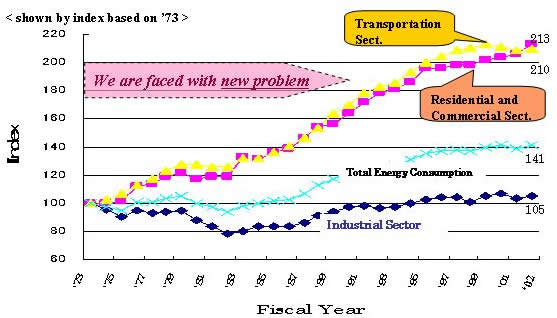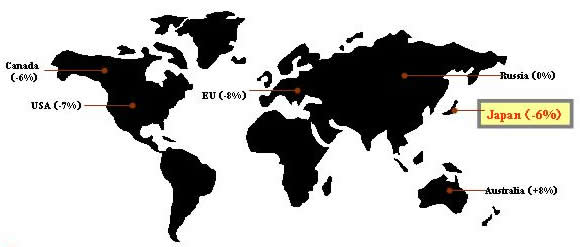Trend in Final Energy Consumption by Sector (~2002)

to enact the regulation of large-scale buildings in conform with Class 1 designated factories.
to strengthen the energy conservation promoting activities of the residential and commercial sector.
| AEEC Home | Training Index | Index | Top | Previous | Next |
| METI/ECCJ/AOTS Training Program | Vietnam |
Trend in Final Energy Consumption by Sector (~2002) |
 |
| Amendment of the Energy Conservation Law(enforced in April, 2003) to enact the regulation of large-scale buildings in conform with Class 1 designated factories. to strengthen the energy conservation promoting activities of the residential and commercial sector. |
<COP3 Kyoto Commitment in 1997> GHG Reduction Targets in Major Countries during 2008 and 2012 (Compared with the base year 1990) |
 |
Dealing with Global Warming by the Government |
Government Policy and Procedure:
|
Kyoto Commitment |
||||||||||
 < Kyoto Commitment achieving plan by Japanese Government --- April 28, 2005 >
< Kyoto Commitment achieving plan by Japanese Government --- April 28, 2005 >
|
| 4/33 Next |
| AEEC Home | Training Index | Index | Top | Previous | Next |
| Copyright(C) ECCJ 1996-2019 |